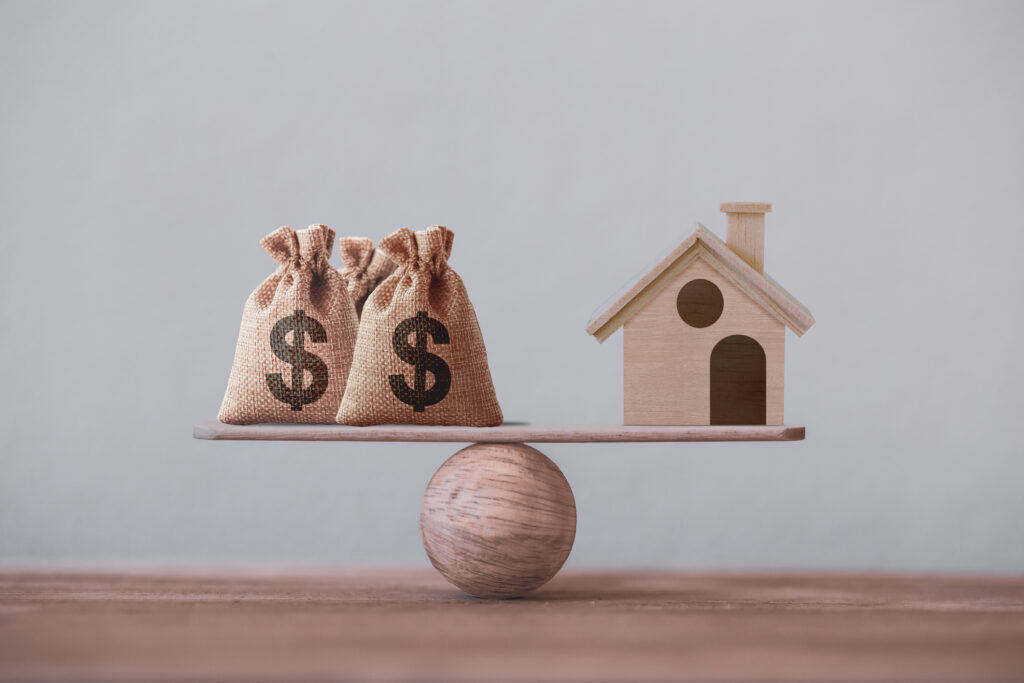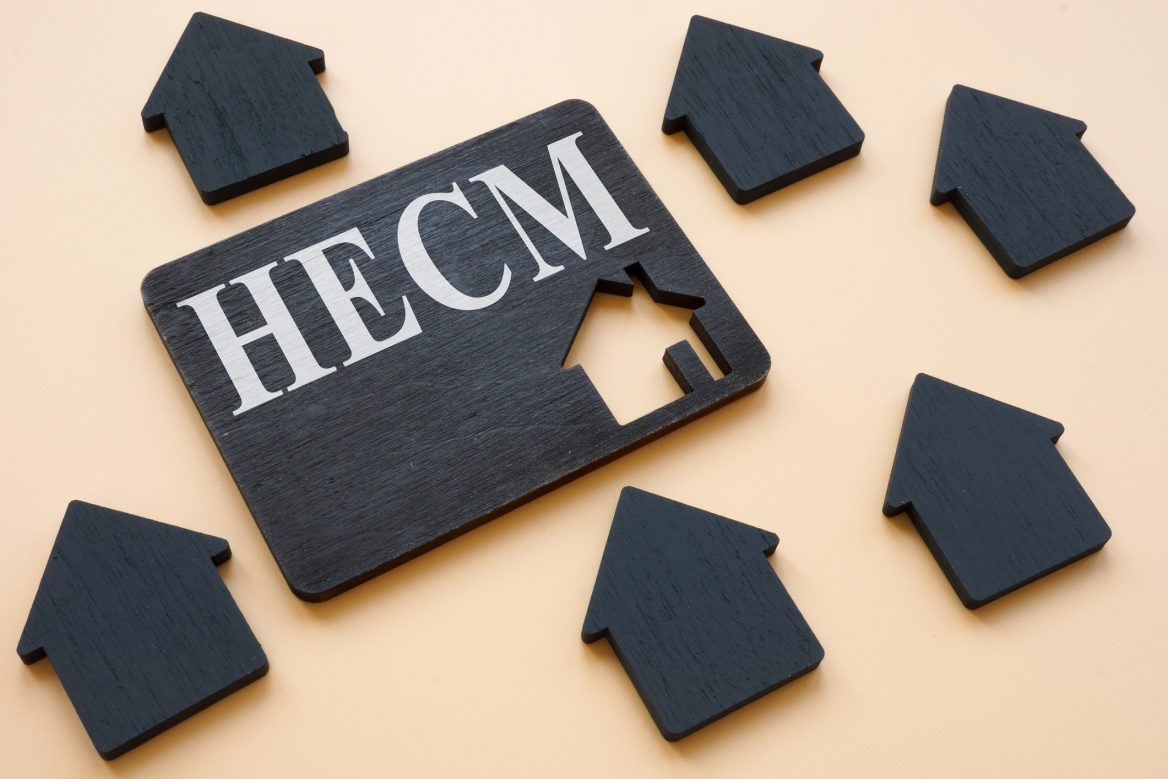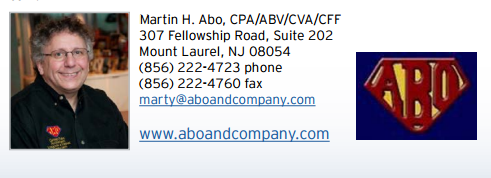 With a reverse mortgage, you maintain control of your principal residence while converting some of the equity into much-needed cash. We here at Abo and Company and Abo Cipolla Financial Forensics have come across some “experienced” clients, age 62 or older, who need to access their home equity because they’re house rich but cash poor. We have often suggested to these folks to at least consider the reverse mortgage strategy explained below.
With a reverse mortgage, you maintain control of your principal residence while converting some of the equity into much-needed cash. We here at Abo and Company and Abo Cipolla Financial Forensics have come across some “experienced” clients, age 62 or older, who need to access their home equity because they’re house rich but cash poor. We have often suggested to these folks to at least consider the reverse mortgage strategy explained below.
Managing member Marty Abo successfully used the reverse mortgage technique several years back for two of his most cherished clients – his lovely mom, Ina Abo, and the best father-in-law one could ever ask for, Nate Meisler. Times have changed in the interim with regulations and the market itself tightening up. Still, Marty was quite pleased to recently learn from a mortgage consultant colleague, Niki Dolin of Norcom Mortgage, the potential option of using a reverse mortgage.
Here, we had been consulted in a matrimonial situation where the adverse party was attempting to avoid a substantial reduction or modification in permanent alimony. Here, we learned we would be able to secure a
$379,000 reverse mortgage with a fixed interest rate of 8 1/8% and NO CLOSING COSTS against a hypothetical home worth $800,000. It at least became an option we, working closely with counsel, could at least consider.
Download Printable Article (PDF) >>>
HOW REVERSE MORTGAGES WORK
With a reverse mortgage, the borrower doesn’t make payments to the lender to pay down the mortgage principal over time. Instead, the reverse happens. The lender makes payments to the borrower, and the mortgage principal gets bigger over time.
Interest accrues on the reverse mortgage and is added to the loan principal. The borrower doesn’t have to make any interest or principal payments until required under the terms of the loan. Typically, no payment is due until the borrower dies or permanently moves out of the home. You are charged interest only on the funds (loan proceeds) that you receive. For example, if you take your loan proceeds as a line of credit, you are only charged interest on the portion of the line of credit you have withdrawn. The interest is compounded which means you pay ongoing interest on the principal PLUS accumulated interest.
Reverse mortgage proceeds can be received as a lump sum, in installments, or as line-of-credit withdrawals. After the borrower dies or permanently moves out, the property can be sold, and the reverse mortgage balance, including the accrued interest, can be paid out of the sales proceeds. Alternatively, the heirs can pay off the reverse mortgage and retain ownership of the home.
While taking out a conventional home equity loan is an option for many cash-strapped homeowners, seniors often can’t qualify due to low income. However, they often qualify for a reverse mortgage.
Abo and Company take away? With a reverse mortgage, you maintain control of your principal residence while converting some of the equity into much-needed cash. In contrast, if you sell your residence to raise cash, it could involve an unwanted relocation and a big income tax hit if the place has appreciated substantially, which is highly likely these days.

Most reverse mortgages are so-called Home Equity Conversion Mortgages (HECMs), which are insured by the federal government. The borrower must be at least 62 years old to be eligible. For 2022, the maximum amount that can be borrowed under an HECM is $970,800. That limit is way up from just a few years ago, thanks to surging home prices. However, the maximum amount that can actually be borrowed is limited to a percentage of the appraised value of the home that secures the mortgage. More specifically, the exact lending limit depends on the value of the home, the owner’s age, and the amount of any other mortgage debt against the property. The percentage of the home’s value (net of any existing mortgage debt) that can be borrowed goes up with the owner’s age.
Reverse mortgage interest rates can be fixed or variable depending on the deal your our client signs up for. Fixed rates are available if loan proceeds are taken as a lump sum. Interest rates are somewhat higher than
for conventional home loans, but not alarmingly so. As with any major borrowing transaction, it’s important to find an acceptable interest rate and reasonable up-front charges. Up-front charges for a reverse mortgage can be higher than costs for a conventional mortgage, as explained later.
POTENTIAL TAX HIT IF HIGHLY APPRECIATED PRINCIPAL RESIDENCE IS SOLD
An unwelcome side effect of owning a highly appreciated principal residence is the fact that selling the property to raise cash can trigger a taxable gain in excess of what can be sheltered under the federal home sale gain exclusion-up to $500,000 for joint-filing couples ($250,000 for unmarried individuals). The combined federal and state income tax hit from selling a residence could easily reach into the hundreds of thousands of dollars. The current maximum federal income tax rate on the taxable portion of a home sale is 23.8%: 20% for the regular maximum federal rate plus another 3.8% for the Net Investment Income Tax (NIIT).
In New Jersey, your gain is calculated the same way as it is for federal purposes with a maximum rate of 10.75% . Any amount that is taxable for federal purposes is taxable for New Jersey purposes. In California, the maximum state income tax rate on the taxable portion of a home sale is 13.3% (12.3% regular rate plus the 1% mental health services tax). So, the combined federal and state rate could be as high as 37.1% for California or as much as 34.55% for New Jersey. Similarly, in New York City, the maximum combined state and city income tax rate on the taxable portion of a home sale is 14.8%. So, the combined federal, state, and city rate could be as high as 38.6%.
Other states have lower tax rates, but the combined federal and state tax hit can still be very painful. If you sell, all the money to pay the tax hit will be gone forever.
REVERSE MORTGAGE AND TAX BASIS SETP-UP TO THE RESCUE?
A potential solution to the house-rich but cash-poor problem is to take out a reverse mortgage on a highly appreciated principal residence instead of selling and incurring a big tax bill. That way, needed cash can be raised while also setting the homeowner up to take advantage of the tax-saving basis step-up rule explained next. Of course, getting back to the matrimonial matter we consulted Niki Dolin on mentioned earlier, the use of a reverse mortgage could at least be explored as a viable solution available in our “toolbox”.
Basis Step-up Rule in Action. The federal income tax basis of an appreciated capital gain asset, including a principal residence, owned by a deceased individual is stepped up to Fair Market Value (FMV) as of the date of the owner’s death or the alternate valuation date six months later if the estate executor chooses that option.
When the value of an asset eligible for this favorable treatment stays about the same between the death date and the date of sale by the decedent’s heirs, there will be little or no taxable gain to report to the IRS because the sales proceeds are fully offset, or nearly so, by the stepped-up basis.
Here’s how the basis step-up rule can play out in the context of a greatly appreciated principal residence: If you, our beloved client, are married and your spouse predeceases you, the basis of the portion of the home owned by the departed mate, typically 50%, gets stepped up to FMV. This usually removes half of the appreciation that has occurred over the years from the federal income tax rolls. So far, so good. If you continue to own the home until the bitter end, the basis of the portion you own at that point, usually 100%, gets stepped up to FMV as of the date of your death (or the alternate valuation date, if applicable). So, your heirs can sell the property and owe little or nothing to the IRS.
If you are unmarried and the sole owner of the home, the basis of the entire property gets stepped up to FMV when you die, and the heirs can sell the residence and owe little or nothing to the IRS. (We understand the Biden tax plan included a proposal to greatly cut back the basis step-up break, but that idea has apparently been abandoned.)
We were advised by our tax colleagues in other states that if you and your spouse own your home as 50/50 community property in one of the nine community property states (Arizona, California, Idaho, Louisiana, Nevada, New Mexico, Texas, Washington, and Wisconsin), the federal income tax basis of the entire residence is stepped up to FMV when the first spouse dies, not just the 50% portion that was owned by the now-deceased spouse. So, the surviving spouse can sell the home shortly after the other spouse’s departure and owe little or nothing to the IRS.
In other words, if you turn out to be the surviving spouse, there’s no need to keep the property until the bitter end to reap the full tax-saving advantage of the basis step-up rule. However, if you want to hang on to the property, there’s no tax disadvantage to doing so.
ADDING THE REVERSE MORTGAGE STRATEGY TO THE MIX
As you can see, holding on to a greatly appreciated principal residence until death can save a ton of taxes thanks to the basis step-up rule. However, if you need cash right now to make ends meet, we still have a problem. That’s where Abo and Company learned the reverse mortgage strategy could come into play. As stated earlier, a reverse mortgage doesn’t require any payments to the lender until the homeowner dies or permanently moves out of the principal residence. Then, the property can be sold and the reverse mortgage balance can be paid out of the sales proceeds. Any remaining proceeds go to your heirs or estate. Alternatively, your heirs can pay off the reverse mortgage and keep the property along with the basis stepup after paying off the reverse mortgage with funds from other sources. As an aside, in the case with Marty’s Mom and with his father-in-law, the accrued balance at the time of their deaths substantially exceeded the value of the house so that lender was left to take back the house with no recourse at all to Ina or Nate’s estates.
Fees to take out and maintain a reverse mortgage are usually considerably higher than for a regular home equity loan or home equity line of credit. With an HECM, the borrower will usually be charged an origination fee equal to 2% of the first $200,000 of the home’s value plus 1% of any value above $200,000. However, the origination fee can’t exceed $6,000.
Also, the borrower will be charged a Mortgage Insurance Premium (MIP) with an HECM. The MIP consists of a one-time up-front charge that’s due at closing plus an annual charge. The up-front charge equals 2% of
the home’s appraised value or 2% of the HECM lending limit ($970,800 for 2022), whichever is less. The annual charge equals 0.5% of the outstanding loan balance. In addition, the lender can charge a monthly
servicing fee.
Typically, the borrower also will have to pay the standard third-party closing costs for things like title insurance, an appraisal, a survey, pest inspection, settlement services, and so forth. Any one-time up-front fees are usually deducted from the initial reverse mortgage loan amount. For instance, say the total up-front fees for a $450,000 reverse mortgage amount to $20,000. The actual loan proceeds will be $430,000 ($450,000 – $20,000).
You guessed it – we are typically asked if Interest on a reverse mortgage can be deducted? Well, not under the current federal income tax rules. Thanks to the 2017 Tax Cuts and Jobs Act (TCJA), interest on a home
equity loan is nondeductible for 2018-2025 unless the loan proceeds are used to acquire or improve a first or second home. A reverse mortgage taken out to raise cash is classified as a home equity loan for tax purposes. Since the proceeds aren’t used to acquire or improve a first or second residence, the interest is nondeductible for 2018-2025.
Note: Under pre-TCJA rules, interest on a reverse mortgage balance of up to $100,000 could be deductible, but not until the interest is actually paid in cash, which would usually not be until the homeowner dies or permanently moves out of the home. That could be long after the reverse mortgage is taken out. under current law, pre-TCJA rules are scheduled to return in 2026.
CONCLUSION
Some of our house-rich but cash-poor clients might not like the idea of borrowing against their principal residence to raise cash. However, when cash is needed, it has to come from somewhere. If it comes from selling a greatly appreciated principal residence, the cost of raising the cash could be a whopping tax bill. In contrast, if you can raise the needed cash by taking out a reverse mortgage, the only cost will be the fees and interest charges. If those fees and interest charges are much less than the taxes that could be permanently avoided continuing to own the home and benefiting from basis step-up rule, the reverse mortgage strategy might sound pretty good, even to our most skeptical clients.
Martin H. Abo, CPA/ABV/CVA/CFF is the principle of Abo and Company, LLC and affiliate, Abo Cipolla Financial Forensics, LLC, Certified Public Accountants – Litigation and Public Accountants. With offices located in Mount Laurel, New Jersey and Morrisville, Pennsylvania, tips like the above can also be accessed by going to the firm’s website at www.aboandcompany.com or by calling 856-222-4723.



